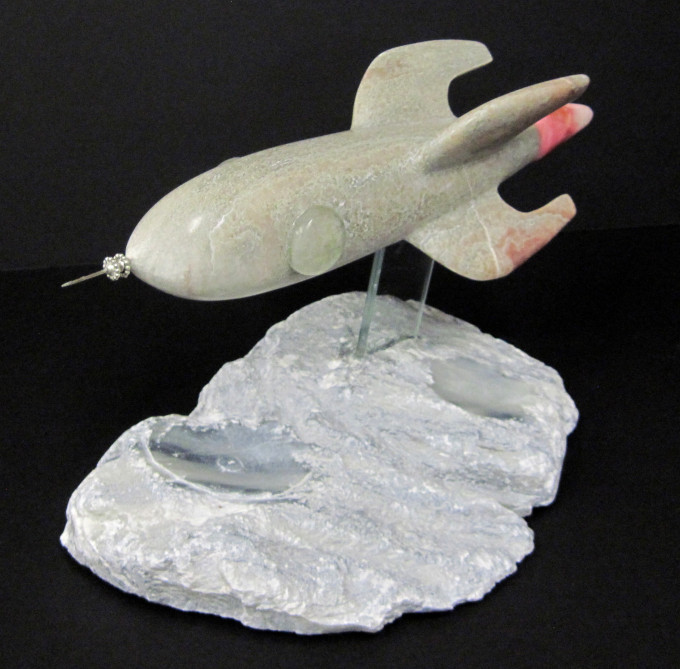
It was the holidays, and everyone was out buying presents and gifts. A great time of the year!
On Christmas morning as we sat by the roaring fire and opened our gifts, I started to count the number of printed circuits we received. For twelve people, 65 gifts had printed circuits in them. Just our small group had kept a number of designers and engineers busy, designing, and creating our presents.
The gift giving in our house alone, kept a few PCB shops and their suppliers, all building PCBs, assemblers, and packaging companies, all busy. Granted a lot of those PCBs were manufactured in places like China and Taiwan, but PCBs all the same, keeping the world economy flourishing.
As I counted the boards in our gifts, two stood out as winners: one was a rather advanced drone, counting the PCB for the camera, a PCB for the radio control, one more for a Bluetooth device meant to be controlled by a smartphone, a circuit board for guidance, one for the charger, and one for the propellers, six printed circuits in all for a ninety dollar drone and that didn’t even count the smartphone!
The second one was a phone controlled lights and outlet kit, with plugins for four outlets, four screw in controllers for lights, and two for cameras and a smart doorbell. This was the winner at twelve printed circuits.
As we opened presents the tally keep going up, this was becoming a game! The new Keurig machine, the flashing led light for the front of the house. Even an electronic Etch a Sketch with a power supply using three PCBs.
Then someone asked, how many printed circuits were in our house? Not wanting to actually disassemble things, we guessed, the tally was rising quickly. Two cars in the garage maybe thirty PCBs in each. Two garage door openers circuits with RF controls, how many boards in those?
And all the appliances: the stove, fridge, dishwasher, garbage disposal, microwave, each with at least five or six PCBs. Even that roaring fire was a gas insert with its’ own remote, meaning more boards.
As we sat there counting, the list went on and on; smoke detectors, carbon dioxide detectors, towel rack heaters; the air exchanger, and air conditioners. Even the “wave your hand and get water” faucet. Each of the 9 ground fault detector outlets, and the water softener, all have multiple PCB assemblies.
As the search continued, this was starting to be fun. How about all the TV sets and their cable boxes, their Blu Ray players, their Roku and Apple TV gadgets? At this point we lost track of how many PCBs were used just in our entertainment systems.
And we had not even got to the eight computer, five Kindles and four I-Pads! Then there was good old Alexa and oh yes, the twelve cell phones, everybody had to have one.
And we had not even gotten to the video games yet, the Atari, the Sony, the X-Box, the WII; and my wife’s four sewing machines, and all those LED lamps throughout the house. And then there was the furnace with its’ controllers and the thermostat.
It made me think with a smile about people who say the PCB is dying, that the market is diminishing. Ha! Really?
And we’re only getting started! How about AI (Artificial Intelligence), or the wireless electric house? How about the growth of the electric car market and the autonomous (self-driving) vehicles?
And toys? Oh, my goodness the toys all crammed full of PCBs!
The question begs to be asked: are we printed circuit manufacturers ready for the upcoming explosion in the need for advanced PCB’s? Not to mention the ever-increasing technology. We know the traces will keep getting smaller, the thermal requirements of the boards will keep increasing and getting more challenging, (we are seeing this now as more and more companies are asking for higher thermal dissipation materials) the layers will increase as the thickness will decrease and the size of the PCB will decrease. The biggest question will always be, “how cheap can you make my circuit board?” Because we all know the last thing our customers want is for us to make too much money no matter what the technology level is!
I remember when the good old USA owned over sixty percent of the global PCB market which was ten billion dollars, so our share was about six billion dollars. The global PCB market is expected to hit seventy billion dollars this year, and our share, what we build here in the USA, will be about five billion dollars, not much different than it was forty years ago. But now the challenge is to grab more of those PCB dollars. The experts say that our true USA market, which is the dollars of boards that US companies buy globally, is about eleven or twelve billion dollars, so it’s our challenge as American PCB suppliers to take a bigger bite out of that apple.
There is no reason that we cannot win more of the American business. There is no reason why we can’t compete globally in the high mix low volume, NPI, QTA, R&D part of the business right now. The defense and aerospace OEMs’ are literally starving for the right domestic suppliers that they need. Get your merit badges, the right qualifications and enter that Asian-proof market today.
And one more thing. What about medical electronics? This is another great market with huge potential. Been to the dentist lately, the doctors, the hospital…you want to talk about PCBs? Wow! Check those places out and you’ll see the future of PCBs. There is no way this market is going backwards, nope, its forward and onward. There’s plenty of PCB business out there so go out there and grab your share. It’s only common sense.
